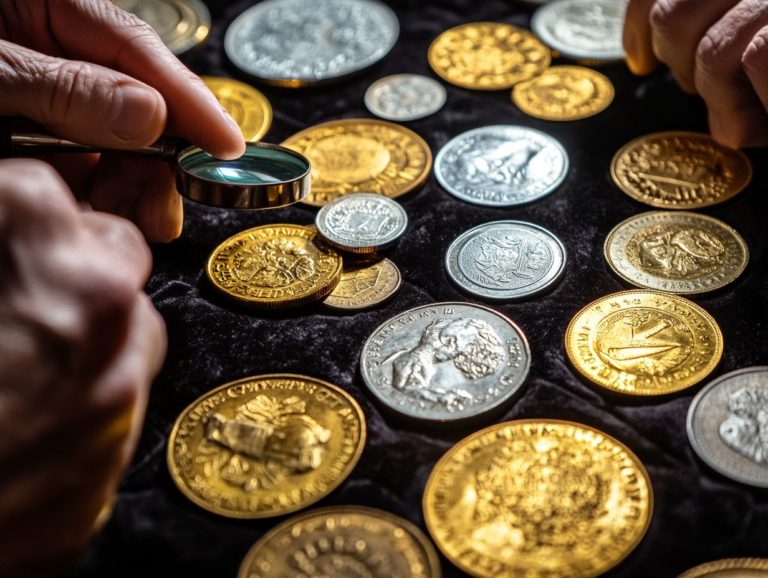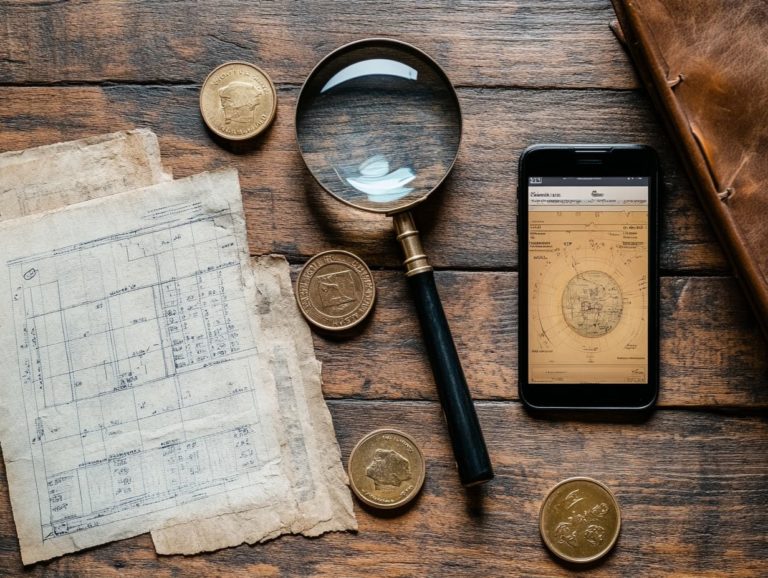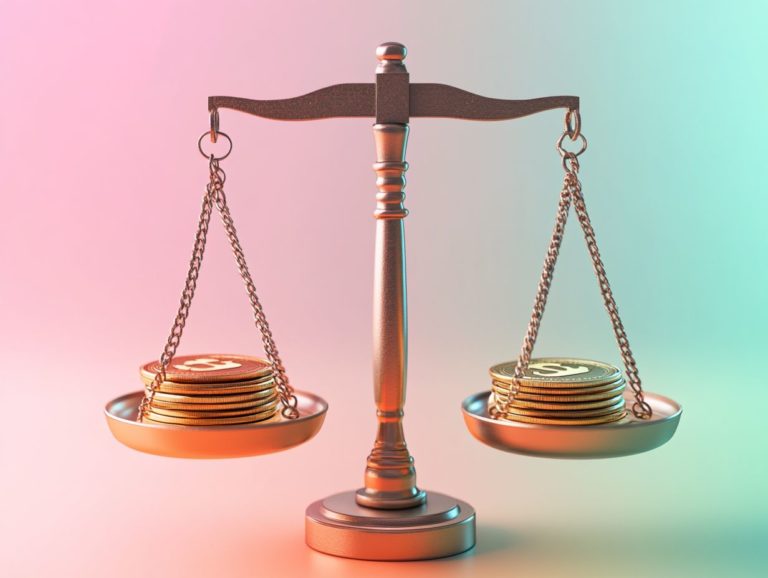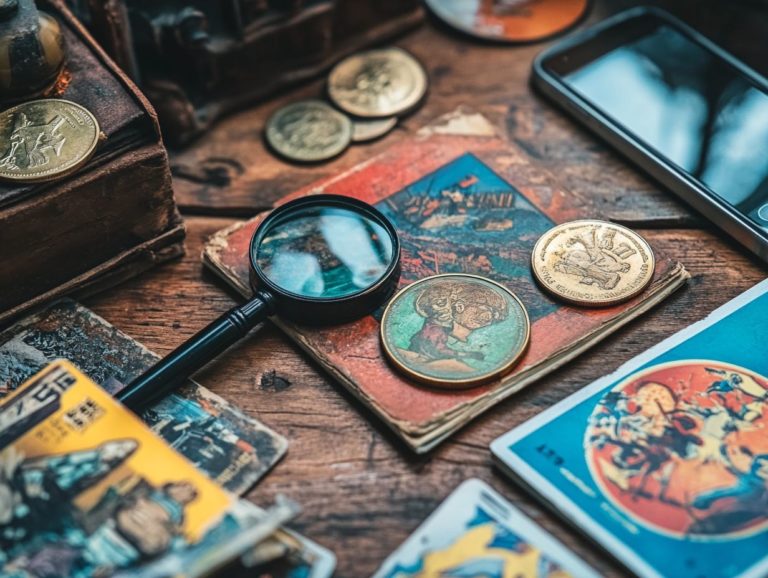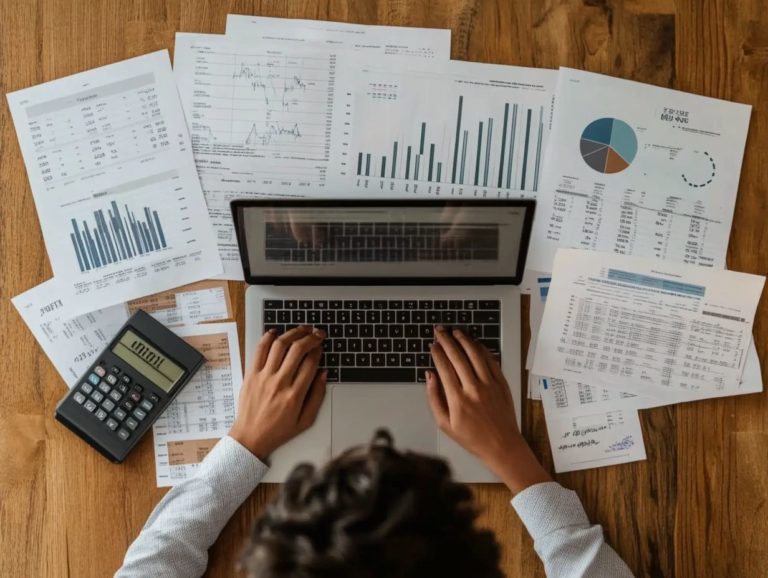How to Get Started with Collectibles?
Collecting can be an incredibly fulfilling and enriching hobby, providing you with a unique blend of nostalgia, investment potential, and a connection to a vibrant community.
Whether you re captivated by stamps, vintage toys, or rare art, grasping what qualifies as a collectible is your essential first step.
This article delves into the motivations behind collecting, explores various types of collectibles, and offers practical tips for starting and maintaining your own collection.
From organization and display methods to preservation techniques, you’ll uncover everything you need to nurture your passion for collecting.
Contents
Key Takeaways:

- Collecting can be a fun hobby.
- Understand what qualifies as a collectible before you start.
- Know your reasons for collecting, like nostalgia or investment.
Understanding Collectibles
Understanding collectibles means recognizing that they are physical items that can hold value.
The world of collectibles is vast, encompassing everything from vintage items to rare sports memorabilia. Each piece can represent varying values and market trends, making it a fascinating landscape to navigate.
For you, collectibles can serve as a strategic diversification strategy, providing unique profit margins that stand apart from traditional stocks and bonds. This realm attracts not only seasoned investors but also passionate hobbyists eager to explore its treasures.
Defining What Counts as a Collectible
A collectible can encompass a wide array of items, from vintage collectibles and collectible toys to trading cards and art pieces, each carrying its own unique resale value based on condition and rarity.
Think about comic books; first editions or those showcasing the debut of iconic characters can appreciate significantly in value among avid fans and collectors. Similarly, memorabilia from the Beatles, such as signed records or concert posters, tends to become even more coveted over time, particularly when it s in pristine condition.
The collectibles market is shaped not only by an item s historical significance and demand but also hinges greatly on its grade and preservation quality; even minor wear can drastically alter its value. As a result, collectors often turn to professional evaluations to ensure they re optimizing their investment potential.
Why People Collect
You might collect for many reasons, from the thrill of finding treasures to the joy of reliving fond memories, whether it’s the personal satisfaction that comes from acquiring something meaningful or viewing collectibles as a lucrative investment with the potential for impressive returns.
By understanding these motivations, you can adeptly navigate market trends and tailor your collection strategies to align seamlessly with your financial aspirations.
Possible Motivations and Benefits
The motivations and benefits of collecting can vary greatly for you, ranging from the joy of possessing historically significant items to employing a diversification strategy that helps mitigate investment risk.
As a collector, you may discover that your pursuits not only bring emotional satisfaction but also offer substantial long-term growth potential. Don’t overlook the financial side of collecting; it often leads to impressive appreciation in value, making it a savvy choice for anyone looking to enhance their portfolio.
Engaging with financial advisors can elevate your collecting experience even further, as these professionals provide valuable insights into market trends and investment strategies. This way, you can make informed decisions that support both your personal fulfillment and financial aspirations.
Dive into the world of collectibles today! What treasures will you uncover?
Types of Collectibles
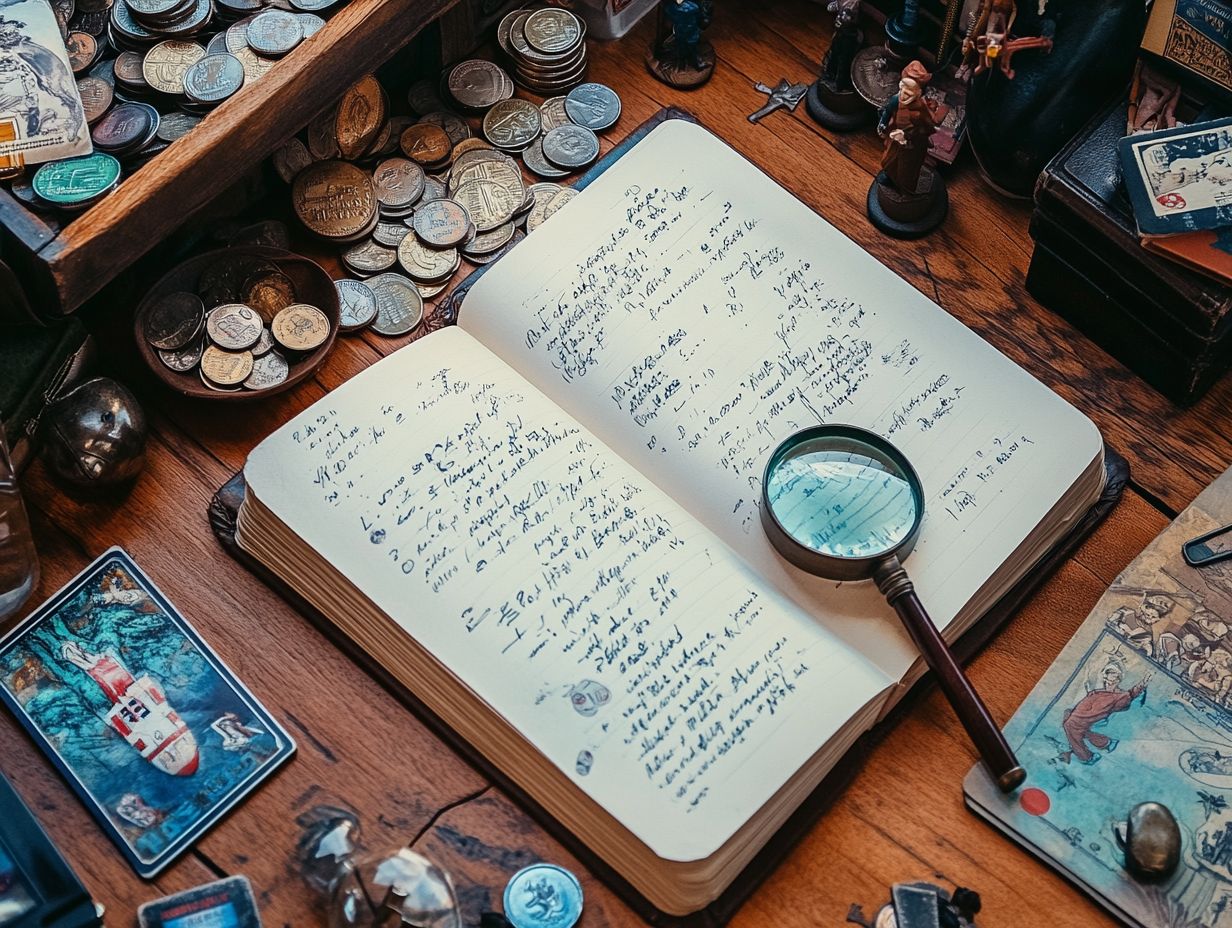
The world of collectibles unfolds before you, rich and diverse, encompassing a myriad of categories.
From rare collectibles to sports memorabilia, collectible cards, and art pieces, each segment offers its own unique niche market and investment opportunity.
Popular Categories and Examples
Popular categories of collectibles include comic books, Beatles memorabilia, trading cards, and collectible toys. Each offers its unique charm and profit potential.
Take comic books, for instance. They tap into nostalgic sentiments and draw in serious investors.
First editions like Action Comics #1 have been known to fetch staggering auction prices, often exceeding millions.
Then there’s Beatles memorabilia, which continues to enchant fans and collectors alike. Authentic signed albums can command substantial values.
Trading cards, especially those from the Pok mon and sports realms, have seen a meteoric rise in popularity. This creates a booming market focused on rarity and condition grading, underscoring the importance of verifying authenticity.
Lastly, collectible toys, particularly vintage action figures, evoke cherished childhood memories. They also present valuable investment opportunities, with demand steadily increasing among niche collectors.
Starting Your Own Collection
Starting your own collection requires careful thought about how to discover and acquire collectibles that align with your interests and investment goals, including understanding the basics of collectibles and art.
You might use platforms like eBay while seeking expert guidance to ensure your collection is managed effectively.
Tips for Finding and Acquiring Collectibles
When searching for collectibles, use online marketplaces. Stay informed about auction prices and watch for potential fraud.
To enhance your collecting experience, engage with seasoned collectors in forums and local communities.
These interactions provide valuable insights into genuine market trends and tips for evaluating authenticity.
By understanding historical price fluctuations, you can make informed purchasing decisions. Also, consider insurance costs for high-value items and be mindful of selling difficulties that may arise.
By balancing these factors, you can navigate the intricate world of collectibles with greater confidence.
Organizing and Displaying Your Collection
Organizing and showcasing your collection demands a refined approach to collection management.
Assessing the condition of each piece and seeking expert advice are essential in enhancing both the enjoyment and value of your collectibles.
Methods for Showcasing Your Items

Showcasing your items can be an art form. Utilize display techniques that highlight their uniqueness while considering how condition impacts their value in a buyer’s market.
Different methods can elevate the presentation of your collectibles, enabling you to make informed choices that resonate with potential buyers.
Using shelving offers easy access and creates a curated look that captures attention.
Framing your items, especially two-dimensional pieces, not only protects them but also provides an elegant display that emphasizes their artistry.
Transparent cases are another excellent option. They allow for a 360-degree view of your three-dimensional collectibles while keeping them safe from dust and damage.
Remember, the perceived value of these pieces can fluctuate significantly based on their condition. Buyers are often drawn to items that are well-preserved or skillfully restored, adding desirability to your collection.
Caring for Your Collectibles
Caring for your collectibles is crucial. Use good preservation methods and commit to ongoing maintenance to elevate their historical significance and verify authenticity.
Preservation and Maintenance Techniques
Using effective preservation and maintenance techniques is crucial for protecting your collectibles. Pay close attention to temperature, humidity, and storage solutions.
Environmental fluctuations can cause irreversible damage over time. High-quality storage materials, like acid-free boxes and protective sleeves, can enhance the life of your valuable items.
It’s vital to monitor your surroundings to ensure climate control systems are working well. Also, assess your insurance options for financial protection against loss or damage.
By identifying risks related to theft, fire, or natural disasters, you can create a strategy for preserving your cherished collection.
Frequently Asked Questions
What are collectibles?
Collectibles are items that collectors find valuable or desirable. They can include stamps, coins, toys, antiques, and rare books or autographed memorabilia.
How can I determine which collectibles to start with?
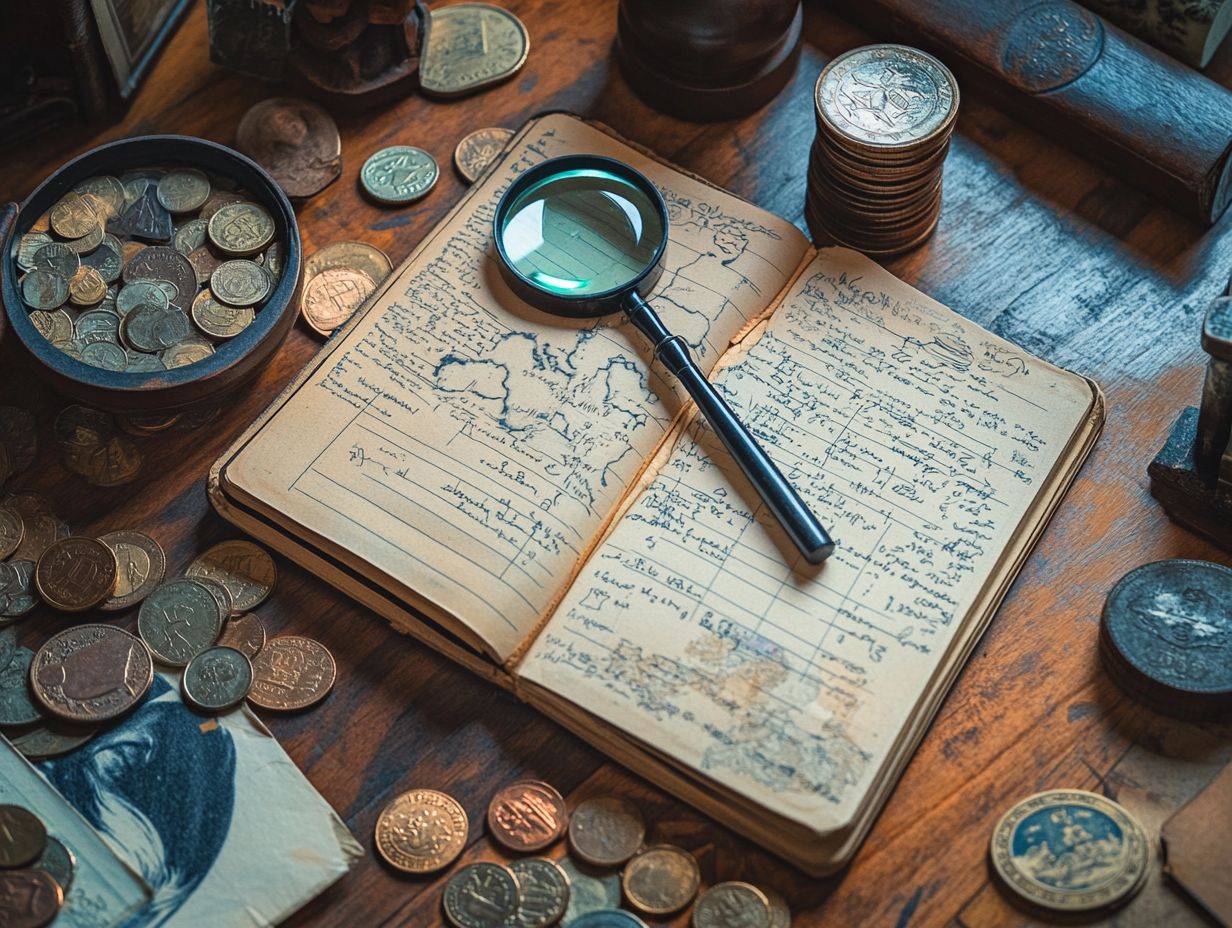
Choose items that interest you or those with sentimental value. A personal connection makes the collecting experience more enjoyable.
Where can I find collectibles to add to my collection?
Look for collectibles at thrift stores, garage sales, antique shops, and online marketplaces like eBay. You can also trade with other collectors.
How do I know if a collectible is authentic?
Research the specific collectible you’re interested in. Check for identifying marks, certifications, and buy from reputable sellers. If unsure, consult an expert or seasoned collector for insights on how to spot a good collectible investment.
How do I store and preserve my collectibles?
Store collectibles in a cool, dry, and dark place to avoid sunlight and moisture damage. Use acid-free materials and handle them sparingly. For valuable items, consider proper display cases.
What are some tips for maintaining and growing my collection?
Join collector clubs or attend conventions to network and learn. Stay updated on market trends to make informed buying and selling decisions. Most importantly, enjoy your collecting journey!

